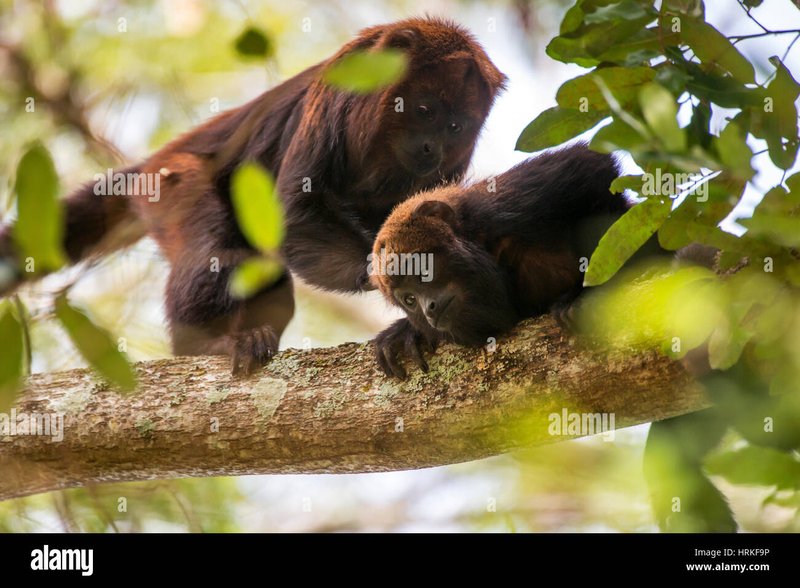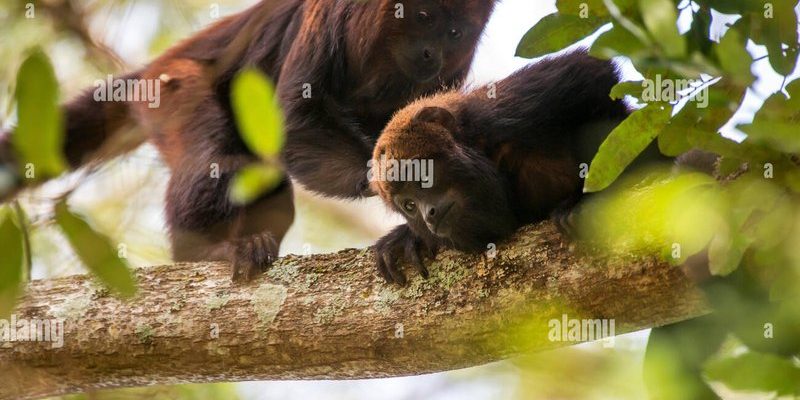
Imagine being part of a close-knit family that relies on each other for support and safety. That’s essentially how a group of Guaribas operates. These monkeys live in social groups, and raising their young is a collective effort. We’ll dive into the different stages of their parenting journey, from bonding to weaning, and see how their interactions shape the future of these incredible animals.
The Role of the Social Structure in Parenting
One of the most unique aspects of Guaribas is their social structure. These monkeys typically live in groups that can range from a few individuals to over a dozen. In these communities, everyone plays a role in raising the young. You might think of it like having a whole village to help you raise a child.
Within the group, adult females often take on the primary responsibility for caring for infants. This hands-on approach not only strengthens the mother-infant bond but also allows other females to get involved. When a new baby is born, you’ll see other group members grooming the baby and even carrying it around. It’s not just about the mother; it’s a communal effort.
This social bonding is crucial. Young howler monkeys learn by observing their mothers and other adults, picking up essential skills for survival. By nurturing one another, these groups create a supportive environment that benefits both the infants and the entire community.
Gestation and Birth: The Beginning of Life
Let’s talk about how it all begins. Guaribas have a gestation period of about six months. During this time, the expectant mother takes special care of herself, often becoming less active and more focused on her health. It’s similar to how we might prepare for a baby—eating well, resting, and creating a safe space.
When the time comes, the mother will give birth to a single baby. Twins are rare among Guaribas. The newborn is tiny, weighing just about a pound, and is completely dependent on its mother for food and protection. You might picture the mother cradling her baby close to her body, where it feels safe and warm.
Once the baby is born, bonding is crucial. The mother will spend a lot of time grooming and cuddling her infant. This not only helps to create a strong emotional connection but also encourages the baby’s development. It’s heartwarming to watch, and it lays the groundwork for a healthy upbringing.
Feeding and Weaning: The Path to Independence
As the baby grows, feeding becomes a crucial part of the nurturing process. Guariba infants rely entirely on their mother’s milk for the first few months of life. This duration is vital for their growth and boosts their immune systems. Imagine how important it is to provide the right nutrition; it’s the foundation that sets the stage for a healthy future.
As they approach the age of six months, infants start to explore solid foods. The mother introduces them to fruits and leaves, which are staples in their diet. This stage is like a child learning to eat vegetables for the first time—some might be more curious than others. The mother will often encourage her baby to try different foods, and you can see the little one mimicking her actions, learning as they go.
Weaning is a gradual process. By the time they’re about a year old, most young Guaribas are fully weaned, but they often continue to stay close to their mother. They watch and learn from her, which is crucial for their survival skills.
The Importance of Play in Development
You might not think of play as an essential part of parenting, but for Guaribas, it’s a big deal. Young howler monkeys engage in a lot of playful activities, which are vital for their physical and social development. Think of it as a combination of exercise and social training.
While they frolic together, they learn important skills such as climbing, jumping, and navigating through trees. Their playtime often involves roughhousing with siblings or peers, which helps them develop their strength and agility. It’s not just fun; it’s a critical part of their growth process.
Play also teaches social behavior. By interacting with other young Guaribas, they learn how to communicate, share space, and establish social hierarchies within their groups. It’s these interactions that help them become well-adjusted adults.
Protective Parenting: Keeping the Young Safe
In the wild, dangers lurk everywhere. Guaribas face threats from predators like snakes, birds of prey, and even larger mammals. For this reason, protective parenting is a priority. You might be wondering how these monkeys manage to keep their young safe while they explore.
The mother is always alert, keeping a watchful eye while her baby plays and explores. When danger approaches, she doesn’t hesitate to call out a warning. The group has a system of vocalizations that alert each other to potential threats. The iconic howl of the howler monkey is not just for show; it’s part of their communication strategy.
If a threat is detected, mothers will gather their babies close and move to higher branches. Their agility and knowledge of the terrain become their best assets. Watching a mother navigate the trees with her baby in tow is a testament to their remarkable instincts and adaptability.
The Transition to Adulthood
As infants grow into adolescents, they begin to assert their independence. Around the age of two, young Guaribas start to venture further from their mothers, testing their boundaries. It’s like watching a teenager trying to find their own path, searching for their identity while still needing guidance.
While they explore, they maintain close ties with their mothers and other adults in the group. This continued bond is crucial, as it provides them with support while they learn to fend for themselves. Eventually, around age three, they will become fully integrated into the group, both socially and physically.
Here’s the thing: even after becoming independent, the lessons learned during their early years significantly shape their behavior as adults. A young Guariba that had a nurturing upbringing is more likely to thrive and eventually become a supportive parent themselves.
Raising young Guaribas is a beautiful blend of love, instinct, and community effort. From the moment a baby is born, the forest becomes a classroom filled with lessons that shape their future. The bond between parent and child is strengthened through nurturing, play, and protection, creating a deep connection that lasts a lifetime.
Understanding how Guaribas raise their young not only gives us a deeper appreciation of these amazing animals but also highlights the importance of family and community. In the complex web of the jungle, every howl and playful jump tells a story of growth, survival, and the hope for the future. So the next time you hear their haunting calls, remember the love and care that echoes through the trees.

